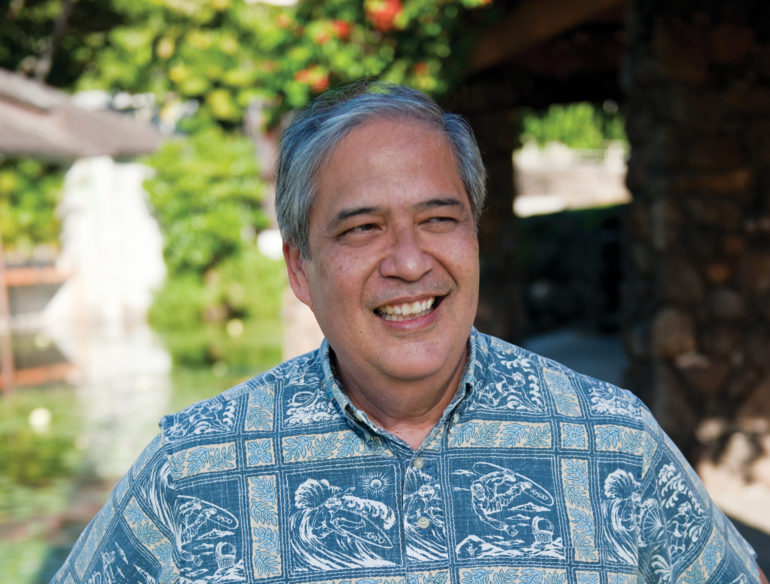These remarks are excerpted from President Jim Scott’s ’70 welcome address to faculty and staff at the beginning of the school year.
The British mathematician and philosopher Alfred North Whitehead once said: “The art of progress is to preserve order amid change and to preserve change amid order.”
One theme for this year is preserving continuity amid transition. Healthy schools can embrace and hold this creative tension, and Punahou’s sources of continuity transcend leadership changes – they are our mission, vision and the Aims of a Punahou Education.
Next year, a son of Punahou will return home to become the next president. Mike Latham ’86 is a respected and accomplished educator who is attracted to Punahou’s big vision and its educational aspirations. He was drawn to a school culture of innovation with the talented people and ample resources to pursue possibilities.
Twenty-four years ago, another son of Punahou returned to his alma mater. Not many of you were seated in this Chapel during my first address to the faculty and staff in August of 1994, when I described the kind of school in which I aspired to work and to which I hoped to eventually send my children. Here are some excerpts from that address:
“I want to be at a school with an enlightened, challenging and coherent educational program that is continuously examined in an effort to refine and strengthen it; a school that defines, builds and nurtures a diverse community; a school that promotes in its students a sense of responsibility toward – and interdependence with – their schoolmates, their school and their world; a school that understands and values its interdependence with the outside community, and that promotes mutually beneficial and enriching ways to share resources.
“My ideal school would have a need-blind student admissions policy in which we could admit highly qualified students regardless of their socioeconomic background, their financial station or their parents’ ability to pay. That school would create the necessary resources for every admitted student to be able to attend.
“I would like my children to one day be able to attend a school that attracts, supports and nurtures an inspiring, dedicated and knowledgeable faculty. That school would have a campus that supports and extends teaching and learning, and that appropriately accommodates the school’s programs and goals.
“My ideal school would be fiscally well managed with respect for all constituencies, but with financial efficiencies at all levels of decision-making. And because I want to be at a school whose vision drives its finances, and not the other way around, the school in which I want to work would have a mature and confident way to marshal the necessary financial resources to reach its educational ideals.
“I would welcome an opportunity to work at a school characterized by a high level of collegiality, a place with frequent and helpful personal and professional interactions. I would be excited about life at a school where a climate of risk-taking is deliberately supported and where a safety net supports those who take risks but also stumble.
“I aspire to an education that is a transformation and not a mere transaction; an education that is preparation for a lifetime of learning and not only preparation for the next boxcar on an academic track. My ideal education is one that inculcates in students the skills and qualities of a lifelong learner, so that our hope for them is that their education will always remain unfinished.”
In these sentiments from 24 years ago, we begin to see the continuity of recurring, overarching and timeless themes. These aspirations for a remarkable school have become our compass, our navigational North Star, our Hōkū Pa‘a.
James K. Scott ’70

